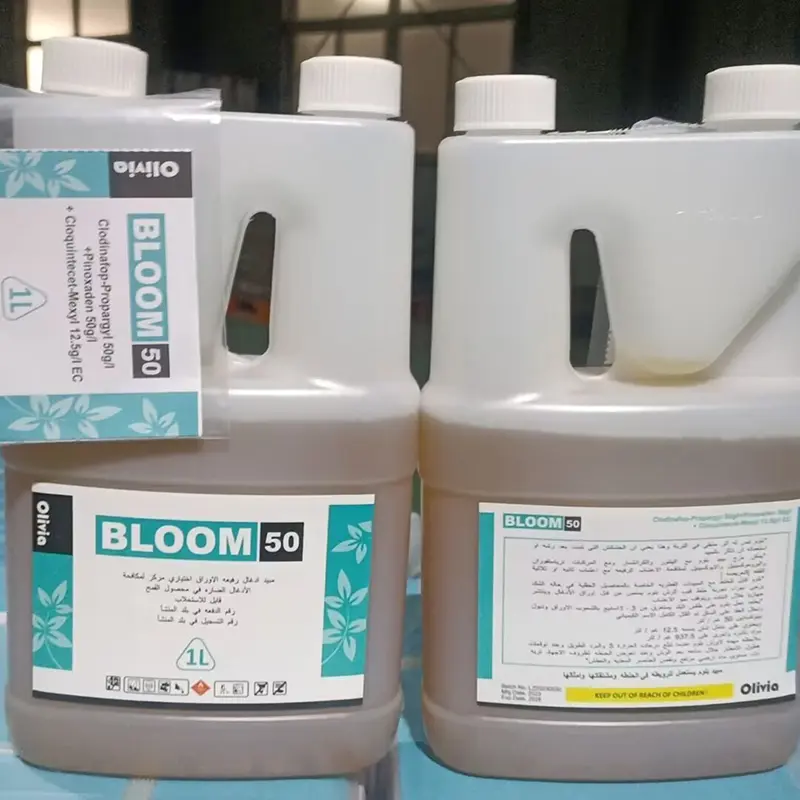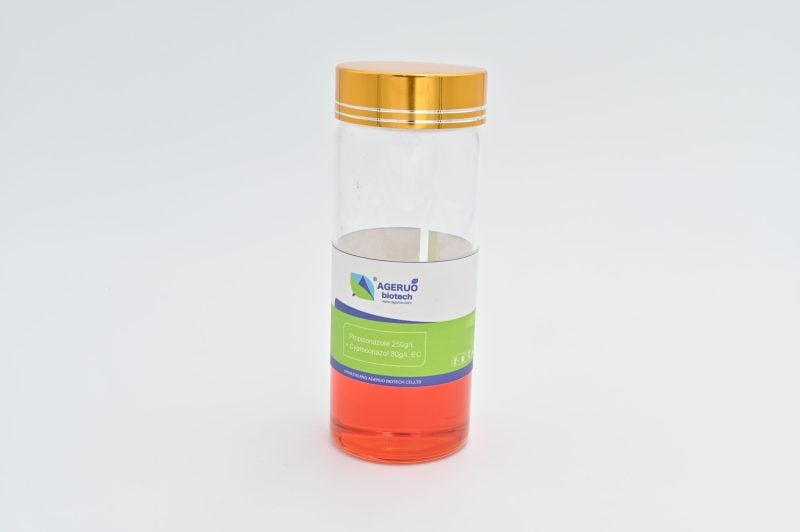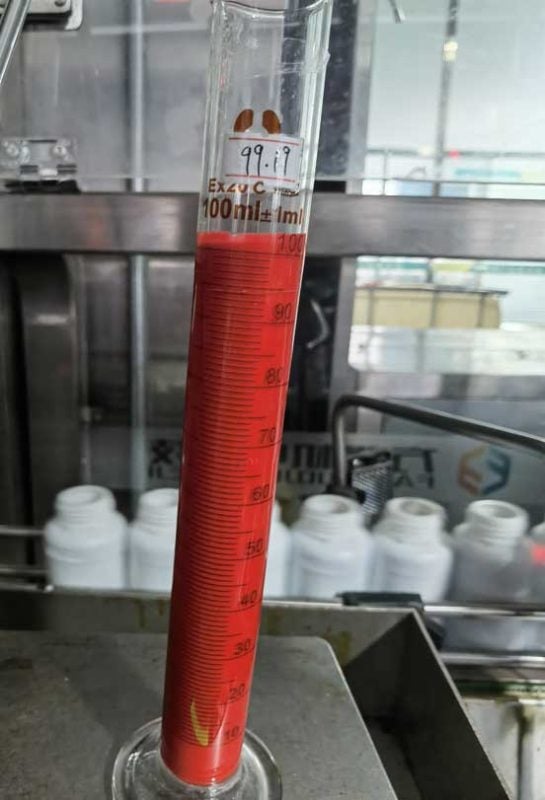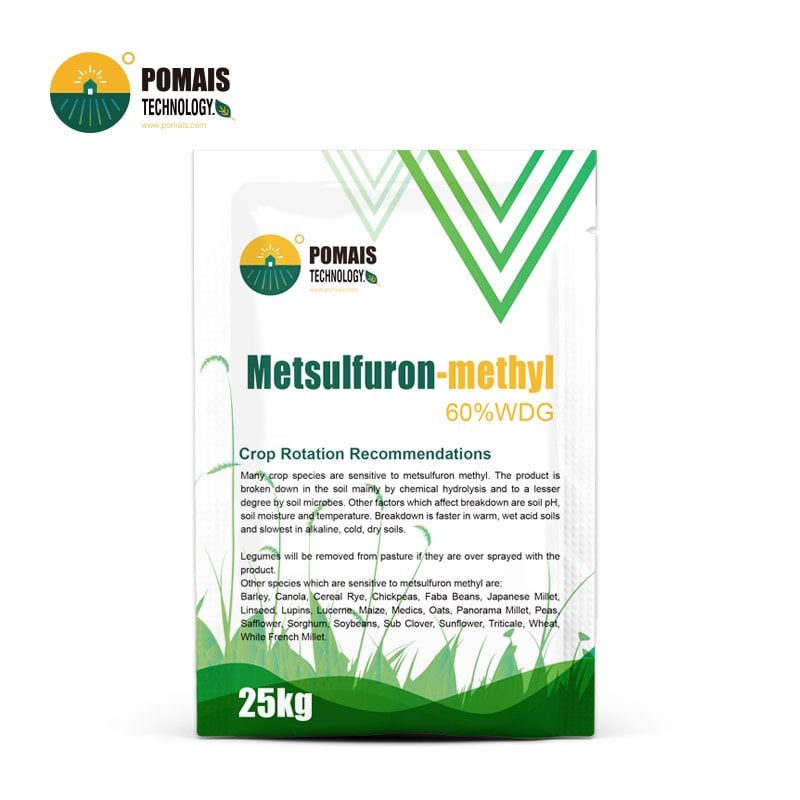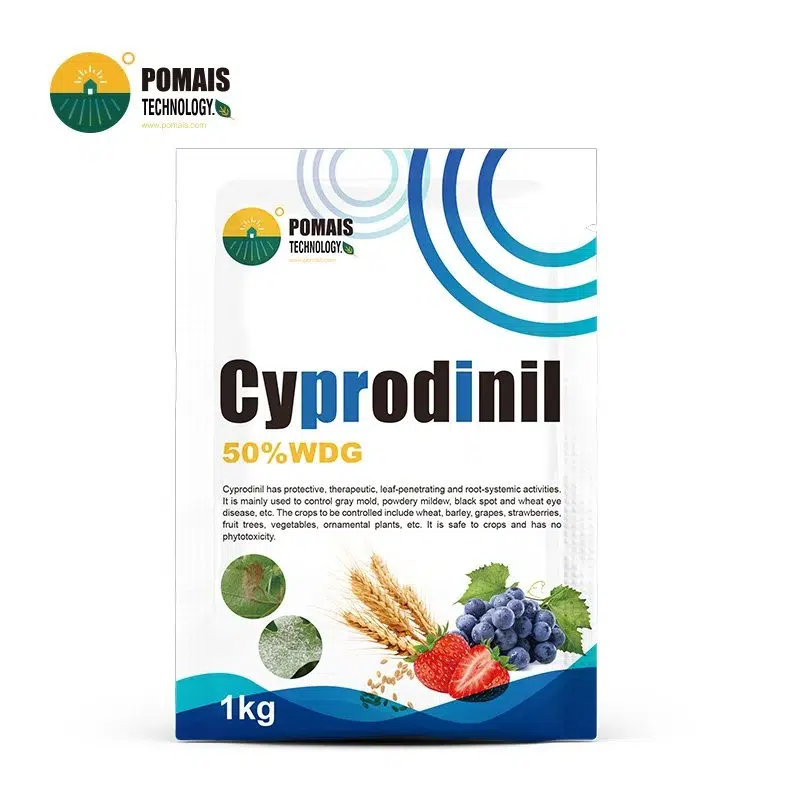Chlorantraniliprole 10% + Clothianidin 30% SC | Dual-Mode Protection for Mixed Pests
A dual-mode SC engineered to control mixed chewing and piercing–sucking pests where registered. You combine IRAC 28 (feeding stop on larvae) with IRAC 4A (systemic, nAChR-driven feeding cessation) to achieve rapid crop protection and program stability. OEM private label and full documents (COA/MSDS/TDS) available.
At a glance
- IRAC 28/4A synergy: feeding stop + systemic reach.
- Designed for IPM rotations: supports resistance stewardship.
- Operationally practical: SC re-disperses quickly; built for consistent coverage.
- Designed for Professional Buyers & Bulk Orders
- This product is available for business purchase and large-scale distribution.
- We support custom packaging, labeling, and formulation to meet your market needs.
- Let’s build your brand together.

About Chlorantraniliprole 10% + Clothianidin 30% SC | Dual-Mode Protection for Mixed Pests
About Chlorantraniliprole 10% + Clothianidin 30% SC | Dual-Mode Protection for Mixed Pests
| Active / Content | Chlorantraniliprole 10% + Clothianidin 30% |
| Formulation | SC (Suspension Concentrate) |
| IRAC / MOA | 28 ryanodine receptor modulator + 4A nAChR agonist |
| Action Profile | Feeding stop on larvae (28) + systemic protection on piercing–sucking pests (4A) |
| Primary Targets | Mixed chewing (Lepidopteran larvae) and piercing–sucking insects (aphids, whiteflies, leafhoppers/planthoppers) — label-dependent |
| Use Areas | Registered crops/sites in open field and protected cultivation, where registered |
| Documentation | COA / MSDS (SDS) / TDS provided per lot |
| OEM Options | Private label, multilingual artwork, barcoding/QR, tamper-evident packaging |
| Packs | Bulk & retail formats (e.g., 1 L / 500 mL / 250 mL) with export-ready outer cartons |
| Lead Time / MOQ | Confirmed at quotation; forecast-based production slots available |
Chlorantraniliprole 10% + Clothianidin 30% SC | Dual-Mode Protection for Mixed Pests
What you get
You deploy a dual-mode SC that merges IRAC 28 feeding stop on larvae with IRAC 4A systemic protection on piercing–sucking pests, giving you rapid injury reduction and program stability across crops where registered. The profile suits threshold-triggered runs when chewing larvae overlap with aphids, whiteflies, or leaf/planthoppers, and it supports IPM rotations without prescribing rates or frequencies. The suspension concentrate is engineered for quick re-dispersion and even coverage, so crews can maintain consistent deposition while your QA teams rely on COA/MSDS/TDS for audits and customer onboarding.
Where it fits
You position this tool in both open-field and protected cultivation to protect foliage and fruit quality when mixed pest pressure emerges. IRAC 28 curbs defoliation by stopping larval feeding, while IRAC 4A extends systemic reach into new growth to suppress probing and honeydew-driven issues. The combination helps you diversify selection pressure, rotate to non-28/4A partners as labels permit, and align with pollinator and aquatic safeguards. Operationally, you gain predictable mixing and spraying, clear documentation, and a format that scales from small lots to multi-block programs.
Why it matters
- Dual-mode synergy: feeding stop + systemic protection to stabilize mixed complexes.
- Rotation-ready: designed for resistance stewardship within non-28/4A sequences.
- Operational confidence: SC re-dispersion and coverage consistency support field efficiency.
Mode of Action & Synergy (IRAC 28/4A)
How each mode works
You combine two complementary mechanisms to control mixed chewing and piercing–sucking pests where registered. Chlorantraniliprole (IRAC 28) modulates the ryanodine receptor, disrupting calcium release in muscle cells. In practice, larvae stop feeding quickly, lose mobility, and die over the next hours to days. This translates into visible injury suppression on foliage and fruit surfaces even under pressure events. The suspension concentrate format supports fine deposition and contact on upper and lower leaf surfaces, while your IPM rotations and sanitation reduce re-infestation. Because 28 is non-neurotoxic, programs often preserve beneficial activity when timing and coverage are optimized.
Why 4A strengthens the program
Clothianidin (IRAC 4A) acts as a nicotinic acetylcholine receptor (nAChR) agonist, driving feeding cessation and mortality through ingestion and contact on hemipterans such as aphids, whiteflies, and leaf/planthoppers. Its systemic movement provides protection into new growth, closing gaps that contact-only tools may leave. In combination with IRAC 28, you get dual-mode protection: rapid feeding stop on larvae plus systemic suppression on probing pests. This functional spread diversifies selection pressure, stabilizes fields after threshold alerts, and keeps rotations flexible—always label-guided with any regional restrictions on IRAC 4A respected.
Stewardship checkpoints
- Rotate to non-28/4A partners in subsequent windows; avoid back-to-back use across generations.
- Plan around bloom windows, manage buffer zones, and mitigate drift to protect pollinators and aquatic organisms.
- Keep uniform coverage and continuous agitation; run a jar test for first-time partners or adjuvants.
- Maintain traceable records (fields, dates, batch, weather, species mix) and observe REI/PHI per the local label.
Target Pests
Chewing insects — larvae-focused (label-dependent)
You position chlorantraniliprole (IRAC 28) against Lepidopteran larvae driving foliage loss and fruit scarring. Typical complexes include armyworms, cutworms, budworms/bollworms, leafrollers, fruitworms, and diamondback moth in vegetables, cotton, tree fruit, and vines where registered. The value comes from rapid feeding stop that protects canopy while mortality progresses over hours to days. Best practice is early-instar timing, uniform coverage of upper and lower leaf surfaces, and alignment with monitoring thresholds and sanitation to reduce refuges. You rotate to non-28/4A partners as labels allow to diversify selection pressure and sustain control between service windows.
- Examples (label-dependent): Spodoptera, Agrotis, Helicoverpa/Heliothis, Cydia/Grapholita, Plutella.
- Program notes: scout early, synchronize with crop stage, and validate results via post-treatment counts.
Piercing–sucking insects — systemic suppression (label-dependent)
You leverage clothianidin (IRAC 4A) for aphids, whiteflies, leafhoppers/planthoppers, mirids, and other hemipterans where registered. The nAChR-driven feeding cessation reduces injury, honeydew, and secondary issues like sooty mold; systemic movement extends protection into new growth that contact-only tools may miss. For programs facing virus transmission risk, the rapid probing stop is operationally important. Results improve when you pair treatments with canopy hygiene, manage dust that can shield colonies, and schedule away from bloom windows to protect pollinators. Maintain rotations to non-28/4A options per label and track species mix to avoid one-sided selection.
- Examples (label-dependent): Myzus/Aphis, Bemisia/Trialeurodes, Nilaparvata/Nephotettix, Lygus.
- Program notes: elevate coverage + clean foliage, confirm REI/PHI, and log outcomes for audits.
Use Areas
Registered crops and production systems
You use this dual-mode SC on registered crops and sites only, aligning deployment with local labels that govern crops, targets, and intervals. Typical programs include vegetables (fruiting, leafy, brassica), cotton, row crops (maize, rice, soybean), and permanent crops such as citrus, pome/stone fruit, and grapevines, plus protected cultivation (greenhouses/high tunnels) where registered. Position treatments at monitoring thresholds and around crop stages where chewing larvae coincide with piercing–sucking pests, ensuring deposits reach both upper and lower leaf surfaces.
Operational considerations
In open field, coordinate runs with wind, temperature, and inversion risk to protect buffer zones and water bodies. In protected systems, align with ventilation and climate control to optimize leaf wetness and deposition, and schedule away from bloom windows to protect pollinators. All use remains label-guided, including REI/PHI, any regional restrictions on IRAC 4A, and resistance guidance for rotations to non-28/4A partners. Maintain traceable records (field IDs, dates, batch numbers, species mix) to support audits and continuous improvement.
Examples (label-dependent)
- Vegetables: tomatoes, peppers, cucurbits, brassicas.
- Row crops: maize, rice, soybean, cotton.
- Perennial fruit: citrus, apples/pears, peaches/nectarines, grapes.
- Protected cultivation: leafy greens, nursery transplants, specialty crops.
Application & Program Fit (label-guided)
Deployment checklist — keep the SC working for you
- Follow the local label: all timings, intervals, and limits are label-guided.
- Tank & water: use clean water in a label-compatible pH range; strain the tank on first fill; maintain continuous agitation so the SC stays homogeneous.
- Coverage: select patterns and volumes that wet upper and lower leaf surfaces without excessive runoff; avoid extreme heat, high wind, inversions, or imminent rainfall.
- Timing triggers: treat on monitoring thresholds—early instars for chewing larvae; active feeding for piercing–sucking pests.
- Recordkeeping: log field IDs, dates, batch numbers, weather, species mix, and outcomes to drive re-service decisions and audits.
Program integration — make it fit the system
- IPM rotations: alternate to non-28/4A partners as labels permit; pair with scouting, sanitation, and exclusion to reduce re-infestation.
- Pollinator & aquatic safeguards: plan around bloom windows, manage buffer zones, and control drift with nozzle and weather discipline.
- Protected cultivation: coordinate with ventilation and climate control so leaf wetness and airflow support deposition and systemic protection.
- Compatibility checks: follow the label mixing order; run a jar test for first-time partners/adjuvants; avoid strong acids/alkalis or unvetted solvent-heavy additives.
- Compliance: observe REI/PHI and any regional restrictions on IRAC 4A.
Verification & continuous improvement — close the loop
- Pre/Post scouting: track injury curves, live counts, and honeydew/sooty-mold indicators in hemipteran programs.
- Species shifts: pivot to non-28/4A tools per label when composition changes; tighten sanitation to protect gains.
- Growth alignment: in fast-growing canopies, align intervals so systemic movement protects new leaves while feeding stop limits fresh injury.
- Service log: standardize dates, blocks, tank constitution, nozzle set, and efficacy snapshots to meet audit expectations and refine intervals, coverage, and partner choices.
Formulation Engineering — SC Stability & QC
Engineered for consistency
- Suspension Concentrate (SC) designed for quick re-dispersion, even spray coverage, and screen/nozzle compatibility.
- Balanced particle size distribution for suspensibility and leaf deposition; thixotropic rheology limits hard settling yet flows under agitation.
- Optimized wetting/dispersant system with controlled defoaming to keep deposits uniform across variable water qualities.
Quality controls you can audit
- Lot release via HPLC assays for both actives; routine checks of pH, viscosity, suspensibility, particle size, and wet-sieve cleanliness.
- Accelerated heat/cold and freeze–thaw programs validate SC stability for transport and seasonal storage.
- Re-dispersion time and visual criteria (appearance/odor) documented on the COA; full MSDS (SDS) / TDS provided.
Storage & handling discipline
- Store in original, tightly closed containers; protect from frost, heat, and direct sunlight.
- Agitate before and during use; strain first fills; keep tanks under continuous agitation through the last nozzle.
- Follow FIFO; record batch/lot numbers for traceability. Always follow the product label and local regulations.
Tank Mix Compatibility & Safety
Compatibility
- Follow the label mixing order; perform a jar test for first-time partners or adjuvants.
- Use clean water within a label-compatible pH range; avoid strong acids/alkalis and unvetted solvent-heavy additives.
- Maintain continuous agitation to prevent settling or flocculation of the SC.
Safety & stewardship
- Observe PPE, REI/PHI, and local drift/buffer rules; schedule away from bloom windows to protect pollinators.
- Manage aquatic safeguards and off-target movement via nozzle selection and weather discipline.
- Respect any regional restrictions on IRAC 4A. Use only where registered and label-guided.
Regulatory Compliance & Environmental Profile
- Where registered use only; comply with local labels for crops, targets, intervals, and maximum seasonal totals.
- Packaging features GHS elements; programs align with MRL, PHI, and REI requirements, especially for export markets.
- Keep traceable records (field IDs, dates, batch numbers, weather, species mix, outcomes) to support audits and stewardship reviews.
- Implement pollinator protections (avoid bloom exposure) and aquatic safeguards (buffer zones, drift control).
- Documentation per lot: COA / MSDS (SDS) / TDS.
OEM Services & Market Support
- Private-label OEM with multilingual artwork, barcoding/QR, and tamper-evident options aligned to your brand system.
- Onboarding kit: spec sheet, label templates, and dossier-style summaries pulled from COA/MSDS/TDS.
- Supply planning: forecast-based production slots, confirmed lead-time windows, palletization notes for export lanes.
- Operations toolkit: mixing order guides, jar test SOPs, scouting templates, and a service log framework to standardize field execution.
Field Use Scenarios
Protected vegetables — whiteflies + Lepidopteran larvae
- At thresholds, schedule runs when larval feeding and probing coincide; coordinate ventilation/climate for deposit quality.
- IRAC 28 delivers rapid feeding stop on larvae; IRAC 4A adds systemic suppression on whiteflies.
- Rotate to non-28/4A partners per label; pair with sanitation (leaf removal, honeydew management).
Cotton — aphids/mirids with bollworm pressure
- Treat at early instars and active piercing–sucking phases; ensure uniform coverage across top/mid canopy.
- 28/4A dual-mode reduces injury and honeydew pressure; schedule away from bloom to protect pollinators.
- Document outcomes; pivot to non-28/4A options in subsequent windows.
Tree fruit/vines — quality protection
- Use at scouted thresholds for leafrollers/fruitworms with intermittent aphid flights; optimize water volume for leaf undersides.
- Align with MRL/PHI for export; validate via post-service counts and adjust rotations accordingly.
- Maintain buffer zones and drift control near sensitive areas.
FAQ
Q1. Can I tank-mix this SC with other insecticides or foliar nutrients?
Only if the label permits. Run a jar test, keep agitation continuous, and avoid strong acids/alkalis or unvetted solvent-heavy adjuvants.
Q2. How does it fit resistance management?
It combines IRAC 28/4A, but you still rotate to non-28/4A partners and embed IPM to diversify selection pressure.
Q3. Is it suitable for protected cultivation?
Yes, where registered. Coordinate ventilation/climate and schedule away from bloom windows to protect pollinators.
Q4. What documentation ships with each lot?
You receive COA / MSDS (SDS) / TDS with batch traceability for inbound QA and audits.
Q5. Are there regional restrictions?
Some markets apply restrictions to IRAC 4A (neonicotinoids). Always follow the local label and regulation.
Q6. What pack formats and lead times are available?
Bulk and retail formats (e.g., 1 L / 500 mL / 250 mL). Lead-time windows and MOQ are confirmed at quotation.
Why Choose POMAIS
- Formulation engineering: verified HPLC content, controlled particle size distribution, thixotropic rheology, and validated freeze–thaw stability.
- Compliance leadership: standardized label-guided language, GHS/MRL/PHI/REI alignment, and traceable records templates.
- OEM speed & resilience: rapid private-label activation, multilingual artwork, and supply synchronized to your season with forecast-based slots.
- Technical partnership: practical mixing guides, jar test SOPs, and rotation roadmaps consistent with IRAC stewardship.
Partner with POMAIS Today
Request your spec sheet, label templates, samples, and a confirmed MOQ/lead-time window. Share your target crops, pest spectrum, and preferred pack formats; we will align branding, logistics, and rotation planning to your market strategy. Always follow the product label and local regulations.
| Active / Content | Chlorantraniliprole 10% + Clothianidin 30% |
| Formulation | SC (Suspension Concentrate) |
| IRAC / MOA | 28 ryanodine receptor modulator + 4A nAChR agonist |
| Action Profile | Feeding stop on larvae (28) + systemic protection on piercing–sucking pests (4A) |
| Primary Targets | Mixed chewing (Lepidopteran larvae) and piercing–sucking insects (aphids, whiteflies, leafhoppers/planthoppers) — label-dependent |
| Use Areas | Registered crops/sites in open field and protected cultivation, where registered |
| Documentation | COA / MSDS (SDS) / TDS provided per lot |
| OEM Options | Private label, multilingual artwork, barcoding/QR, tamper-evident packaging |
| Packs | Bulk & retail formats (e.g., 1 L / 500 mL / 250 mL) with export-ready outer cartons |
| Lead Time / MOQ | Confirmed at quotation; forecast-based production slots available |
Chlorantraniliprole 10% + Clothianidin 30% SC | Dual-Mode Protection for Mixed Pests
What you get
You deploy a dual-mode SC that merges IRAC 28 feeding stop on larvae with IRAC 4A systemic protection on piercing–sucking pests, giving you rapid injury reduction and program stability across crops where registered. The profile suits threshold-triggered runs when chewing larvae overlap with aphids, whiteflies, or leaf/planthoppers, and it supports IPM rotations without prescribing rates or frequencies. The suspension concentrate is engineered for quick re-dispersion and even coverage, so crews can maintain consistent deposition while your QA teams rely on COA/MSDS/TDS for audits and customer onboarding.
Where it fits
You position this tool in both open-field and protected cultivation to protect foliage and fruit quality when mixed pest pressure emerges. IRAC 28 curbs defoliation by stopping larval feeding, while IRAC 4A extends systemic reach into new growth to suppress probing and honeydew-driven issues. The combination helps you diversify selection pressure, rotate to non-28/4A partners as labels permit, and align with pollinator and aquatic safeguards. Operationally, you gain predictable mixing and spraying, clear documentation, and a format that scales from small lots to multi-block programs.
Why it matters
- Dual-mode synergy: feeding stop + systemic protection to stabilize mixed complexes.
- Rotation-ready: designed for resistance stewardship within non-28/4A sequences.
- Operational confidence: SC re-dispersion and coverage consistency support field efficiency.
Mode of Action & Synergy (IRAC 28/4A)
How each mode works
You combine two complementary mechanisms to control mixed chewing and piercing–sucking pests where registered. Chlorantraniliprole (IRAC 28) modulates the ryanodine receptor, disrupting calcium release in muscle cells. In practice, larvae stop feeding quickly, lose mobility, and die over the next hours to days. This translates into visible injury suppression on foliage and fruit surfaces even under pressure events. The suspension concentrate format supports fine deposition and contact on upper and lower leaf surfaces, while your IPM rotations and sanitation reduce re-infestation. Because 28 is non-neurotoxic, programs often preserve beneficial activity when timing and coverage are optimized.
Why 4A strengthens the program
Clothianidin (IRAC 4A) acts as a nicotinic acetylcholine receptor (nAChR) agonist, driving feeding cessation and mortality through ingestion and contact on hemipterans such as aphids, whiteflies, and leaf/planthoppers. Its systemic movement provides protection into new growth, closing gaps that contact-only tools may leave. In combination with IRAC 28, you get dual-mode protection: rapid feeding stop on larvae plus systemic suppression on probing pests. This functional spread diversifies selection pressure, stabilizes fields after threshold alerts, and keeps rotations flexible—always label-guided with any regional restrictions on IRAC 4A respected.
Stewardship checkpoints
- Rotate to non-28/4A partners in subsequent windows; avoid back-to-back use across generations.
- Plan around bloom windows, manage buffer zones, and mitigate drift to protect pollinators and aquatic organisms.
- Keep uniform coverage and continuous agitation; run a jar test for first-time partners or adjuvants.
- Maintain traceable records (fields, dates, batch, weather, species mix) and observe REI/PHI per the local label.
Target Pests
Chewing insects — larvae-focused (label-dependent)
You position chlorantraniliprole (IRAC 28) against Lepidopteran larvae driving foliage loss and fruit scarring. Typical complexes include armyworms, cutworms, budworms/bollworms, leafrollers, fruitworms, and diamondback moth in vegetables, cotton, tree fruit, and vines where registered. The value comes from rapid feeding stop that protects canopy while mortality progresses over hours to days. Best practice is early-instar timing, uniform coverage of upper and lower leaf surfaces, and alignment with monitoring thresholds and sanitation to reduce refuges. You rotate to non-28/4A partners as labels allow to diversify selection pressure and sustain control between service windows.
- Examples (label-dependent): Spodoptera, Agrotis, Helicoverpa/Heliothis, Cydia/Grapholita, Plutella.
- Program notes: scout early, synchronize with crop stage, and validate results via post-treatment counts.
Piercing–sucking insects — systemic suppression (label-dependent)
You leverage clothianidin (IRAC 4A) for aphids, whiteflies, leafhoppers/planthoppers, mirids, and other hemipterans where registered. The nAChR-driven feeding cessation reduces injury, honeydew, and secondary issues like sooty mold; systemic movement extends protection into new growth that contact-only tools may miss. For programs facing virus transmission risk, the rapid probing stop is operationally important. Results improve when you pair treatments with canopy hygiene, manage dust that can shield colonies, and schedule away from bloom windows to protect pollinators. Maintain rotations to non-28/4A options per label and track species mix to avoid one-sided selection.
- Examples (label-dependent): Myzus/Aphis, Bemisia/Trialeurodes, Nilaparvata/Nephotettix, Lygus.
- Program notes: elevate coverage + clean foliage, confirm REI/PHI, and log outcomes for audits.
Use Areas
Registered crops and production systems
You use this dual-mode SC on registered crops and sites only, aligning deployment with local labels that govern crops, targets, and intervals. Typical programs include vegetables (fruiting, leafy, brassica), cotton, row crops (maize, rice, soybean), and permanent crops such as citrus, pome/stone fruit, and grapevines, plus protected cultivation (greenhouses/high tunnels) where registered. Position treatments at monitoring thresholds and around crop stages where chewing larvae coincide with piercing–sucking pests, ensuring deposits reach both upper and lower leaf surfaces.
Operational considerations
In open field, coordinate runs with wind, temperature, and inversion risk to protect buffer zones and water bodies. In protected systems, align with ventilation and climate control to optimize leaf wetness and deposition, and schedule away from bloom windows to protect pollinators. All use remains label-guided, including REI/PHI, any regional restrictions on IRAC 4A, and resistance guidance for rotations to non-28/4A partners. Maintain traceable records (field IDs, dates, batch numbers, species mix) to support audits and continuous improvement.
Examples (label-dependent)
- Vegetables: tomatoes, peppers, cucurbits, brassicas.
- Row crops: maize, rice, soybean, cotton.
- Perennial fruit: citrus, apples/pears, peaches/nectarines, grapes.
- Protected cultivation: leafy greens, nursery transplants, specialty crops.
Application & Program Fit (label-guided)
Deployment checklist — keep the SC working for you
- Follow the local label: all timings, intervals, and limits are label-guided.
- Tank & water: use clean water in a label-compatible pH range; strain the tank on first fill; maintain continuous agitation so the SC stays homogeneous.
- Coverage: select patterns and volumes that wet upper and lower leaf surfaces without excessive runoff; avoid extreme heat, high wind, inversions, or imminent rainfall.
- Timing triggers: treat on monitoring thresholds—early instars for chewing larvae; active feeding for piercing–sucking pests.
- Recordkeeping: log field IDs, dates, batch numbers, weather, species mix, and outcomes to drive re-service decisions and audits.
Program integration — make it fit the system
- IPM rotations: alternate to non-28/4A partners as labels permit; pair with scouting, sanitation, and exclusion to reduce re-infestation.
- Pollinator & aquatic safeguards: plan around bloom windows, manage buffer zones, and control drift with nozzle and weather discipline.
- Protected cultivation: coordinate with ventilation and climate control so leaf wetness and airflow support deposition and systemic protection.
- Compatibility checks: follow the label mixing order; run a jar test for first-time partners/adjuvants; avoid strong acids/alkalis or unvetted solvent-heavy additives.
- Compliance: observe REI/PHI and any regional restrictions on IRAC 4A.
Verification & continuous improvement — close the loop
- Pre/Post scouting: track injury curves, live counts, and honeydew/sooty-mold indicators in hemipteran programs.
- Species shifts: pivot to non-28/4A tools per label when composition changes; tighten sanitation to protect gains.
- Growth alignment: in fast-growing canopies, align intervals so systemic movement protects new leaves while feeding stop limits fresh injury.
- Service log: standardize dates, blocks, tank constitution, nozzle set, and efficacy snapshots to meet audit expectations and refine intervals, coverage, and partner choices.
Formulation Engineering — SC Stability & QC
Engineered for consistency
- Suspension Concentrate (SC) designed for quick re-dispersion, even spray coverage, and screen/nozzle compatibility.
- Balanced particle size distribution for suspensibility and leaf deposition; thixotropic rheology limits hard settling yet flows under agitation.
- Optimized wetting/dispersant system with controlled defoaming to keep deposits uniform across variable water qualities.
Quality controls you can audit
- Lot release via HPLC assays for both actives; routine checks of pH, viscosity, suspensibility, particle size, and wet-sieve cleanliness.
- Accelerated heat/cold and freeze–thaw programs validate SC stability for transport and seasonal storage.
- Re-dispersion time and visual criteria (appearance/odor) documented on the COA; full MSDS (SDS) / TDS provided.
Storage & handling discipline
- Store in original, tightly closed containers; protect from frost, heat, and direct sunlight.
- Agitate before and during use; strain first fills; keep tanks under continuous agitation through the last nozzle.
- Follow FIFO; record batch/lot numbers for traceability. Always follow the product label and local regulations.
Tank Mix Compatibility & Safety
Compatibility
- Follow the label mixing order; perform a jar test for first-time partners or adjuvants.
- Use clean water within a label-compatible pH range; avoid strong acids/alkalis and unvetted solvent-heavy additives.
- Maintain continuous agitation to prevent settling or flocculation of the SC.
Safety & stewardship
- Observe PPE, REI/PHI, and local drift/buffer rules; schedule away from bloom windows to protect pollinators.
- Manage aquatic safeguards and off-target movement via nozzle selection and weather discipline.
- Respect any regional restrictions on IRAC 4A. Use only where registered and label-guided.
Regulatory Compliance & Environmental Profile
- Where registered use only; comply with local labels for crops, targets, intervals, and maximum seasonal totals.
- Packaging features GHS elements; programs align with MRL, PHI, and REI requirements, especially for export markets.
- Keep traceable records (field IDs, dates, batch numbers, weather, species mix, outcomes) to support audits and stewardship reviews.
- Implement pollinator protections (avoid bloom exposure) and aquatic safeguards (buffer zones, drift control).
- Documentation per lot: COA / MSDS (SDS) / TDS.
OEM Services & Market Support
- Private-label OEM with multilingual artwork, barcoding/QR, and tamper-evident options aligned to your brand system.
- Onboarding kit: spec sheet, label templates, and dossier-style summaries pulled from COA/MSDS/TDS.
- Supply planning: forecast-based production slots, confirmed lead-time windows, palletization notes for export lanes.
- Operations toolkit: mixing order guides, jar test SOPs, scouting templates, and a service log framework to standardize field execution.
Field Use Scenarios
Protected vegetables — whiteflies + Lepidopteran larvae
- At thresholds, schedule runs when larval feeding and probing coincide; coordinate ventilation/climate for deposit quality.
- IRAC 28 delivers rapid feeding stop on larvae; IRAC 4A adds systemic suppression on whiteflies.
- Rotate to non-28/4A partners per label; pair with sanitation (leaf removal, honeydew management).
Cotton — aphids/mirids with bollworm pressure
- Treat at early instars and active piercing–sucking phases; ensure uniform coverage across top/mid canopy.
- 28/4A dual-mode reduces injury and honeydew pressure; schedule away from bloom to protect pollinators.
- Document outcomes; pivot to non-28/4A options in subsequent windows.
Tree fruit/vines — quality protection
- Use at scouted thresholds for leafrollers/fruitworms with intermittent aphid flights; optimize water volume for leaf undersides.
- Align with MRL/PHI for export; validate via post-service counts and adjust rotations accordingly.
- Maintain buffer zones and drift control near sensitive areas.
FAQ
Q1. Can I tank-mix this SC with other insecticides or foliar nutrients?
Only if the label permits. Run a jar test, keep agitation continuous, and avoid strong acids/alkalis or unvetted solvent-heavy adjuvants.
Q2. How does it fit resistance management?
It combines IRAC 28/4A, but you still rotate to non-28/4A partners and embed IPM to diversify selection pressure.
Q3. Is it suitable for protected cultivation?
Yes, where registered. Coordinate ventilation/climate and schedule away from bloom windows to protect pollinators.
Q4. What documentation ships with each lot?
You receive COA / MSDS (SDS) / TDS with batch traceability for inbound QA and audits.
Q5. Are there regional restrictions?
Some markets apply restrictions to IRAC 4A (neonicotinoids). Always follow the local label and regulation.
Q6. What pack formats and lead times are available?
Bulk and retail formats (e.g., 1 L / 500 mL / 250 mL). Lead-time windows and MOQ are confirmed at quotation.
Why Choose POMAIS
- Formulation engineering: verified HPLC content, controlled particle size distribution, thixotropic rheology, and validated freeze–thaw stability.
- Compliance leadership: standardized label-guided language, GHS/MRL/PHI/REI alignment, and traceable records templates.
- OEM speed & resilience: rapid private-label activation, multilingual artwork, and supply synchronized to your season with forecast-based slots.
- Technical partnership: practical mixing guides, jar test SOPs, and rotation roadmaps consistent with IRAC stewardship.
Partner with POMAIS Today
Request your spec sheet, label templates, samples, and a confirmed MOQ/lead-time window. Share your target crops, pest spectrum, and preferred pack formats; we will align branding, logistics, and rotation planning to your market strategy. Always follow the product label and local regulations.
Related Products
Latest News


